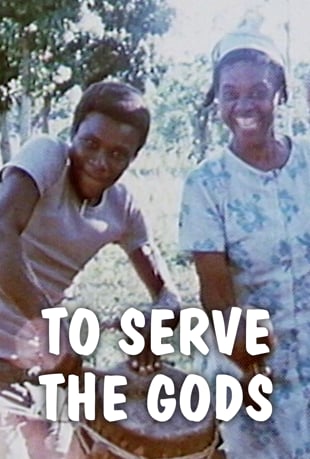

“With prayers and song, music and dance, food offerings and animal sacrifice, the gods will be served one after another, until all have been satisfied.”
Throughout my later teenage years I went on a series of short-term evangelical missions to the Republic of Haiti. While my feelings about my time spent there are conflicted and convoluted, I don’t regret the experiences and remain certain that the bulk of the humanitarian projects I was involved in bore tangible fruit. (I also met my wife on one of those trips, so everything else may as well be background noise.) Though I often found myself frustrated when considering the hefty cost of the trip and the subsequent routine feel of the itinerary, my champing at the bit was occasionally rewarded with an unplanned smack in the face. Most of our planned activities were low-level, surefire ventures—vacation Bible school, constructing sheds, distributing imported rice to orphanages, building cages for rabbit farmers. These memories are a blur for me. But I’ll never forget the day when we were distributing clothing to a homeless beachside population and a frantic pregnant woman came screaming into our midst. She had been beaten bloody by her baby’s father in an attempt to kill the unborn child. I had the privilege of riding with her in the back of a pickup truck to the hospital in Port-au-Prince, praying over her, and assuring her that the cost of her treatment would be covered.1
Similarly, I’ll never forget the time that a friend and I planned an overnight hiking trip with the stated goal of spreading the Gospel to hard-to-reach areas of the island. Hubristic idealism, to be sure. For many team members, the most dreaded ministry activity of the week was backpack evangelism in the villages surrounding the compound—you know, just a silly extraneous thing like fulfilling the Great Commission. It was disliked because almost every Haitian living near the missionary compound had heard the Gospel and either accepted it or rejected it. The language barrier made it difficult to go much deeper than the basics so you were often left with a limp presentation that the recipient knew by heart. They’d take the proffered bag of dental floss and shampoo and other sundry items, most would even let you pray for them, but moments of true import were few and far between.

But when you plan a route that specifically avoids those Gospel-saturated areas, as we did for our overnight trip, you don’t find blank slates who eagerly lap up the Word of God like a marathon runner in the desert—you run into uncivilized backcountry shamans who ritually sacrifice animals to pagan gods, sport supernumerary phalanges, and court demon possession. Of course, I didn’t know this at the time, nor did I actually witness any of that save for the fact that I shook the hand of a man whose mitt had seven fingers (but maybe that was a birth defect like I assumed at the time). In any case, I was just an oblivious American stuttering my way through a conversation in extremely broken Creole, unaware of the subtle hints that raised the hackles of my more experienced friend. The area we had chosen to camp, selected via satellite image, was alarmingly close to the site where we had encountered our machete-wielding Vodou friends. Once we had made our way to the edge of the group’s earshot my friend tersely whispered that I should retrace my steps and head back to the compound—he was too scared to sleep outdoors.
Now, the team leaders certainly tell their group members about Vodou. Sure. But they intentionally steer clear of it, leaving one to imagine what’s happening off the beaten path based on American pop culture representations of the folk religion. You’d occasionally witness to a Haitian who found themselves unable to let go of their family’s pagan traditions and follow Christ wholeheartedly, but this was always confessed shamefully and conveyed through an interpreter. It wasn’t like we went to visit them at their home and found them scrawling a pentagram in the dirt. For all intents and purposes, Vodou was something happening in the shadows where the weeklong missionaries dared not glance. As we trekked back the way we’d come, away from the shaman and his posse and toward the fenced-in, razor-wired compound, my friend enlightened me to his apprehensions and I found myself with a little hop in my step.
I’ve often thought of that experience and wished I’d had more maturity; had a more secure grasp of the faith I professed as well as the one that the outland Haitians practiced; knew more than twenty vocab words in Creole. Because until he told me that we were in danger I didn’t feel like anything was amiss. Maybe I’m hopelessly naive and I was about to be hogtied and roasted over a fire. Maybe they just wanted to rob me of the spam, peanut butter, and trail mix in my pack. But I doubt it. Now that I’ve seen Karen Kramer’s To Serve the Gods, I doubt it even more.
Kramer’s short documentary film, which captures a once-in-a-generation religious celebration, confirms my personal observations that Haiti is a nation of spiritually vibrant people, regardless of their professed religion.2 It does not cover its material in depth but rather captures footage of various rituals and explains the corresponding beliefs via English-language voiceover. Unpretentious, simple in execution, and educational in format, it will appeal to very few. Thankfully, I’m one of those few and found myself entranced.

In the Vodou cosmology, the gods are local, tied to the land and united with the families who live in the same places their ancestors have for many generations. Children are expected to serve the same local deities as their parents, and when the large celebration occurs once every 20-30 years, the extended family flocks back from the cities to participate in the rituals. The gods, which are called Lwa or Loa, must be supplicated with various food and drink offerings before they will join the celebration. The more experienced members of the family ensure that the correct meals are prepared and laid out just so, ensuring that the Lwa will be satisfied with the offerings and grant them peace and prosperity for another generation. Once the gods are in their midst—initially captured in an eerie out-of-focus shot where a possessed woman strolls out of the pitch black whistling a tune—the festivities turn to song and dance, a mesmerizing drum-and-chant routine. The sacrifice, possession, celebration cycle repeats in escalating fashion for a number of days, moving from a chicken to a turkey to a goat and so on, until a bull with flaming horns is killed in the culminating ritual. It is important to note that for poor Haitians, the sacrifice of an animal is no small matter.
Possession is not a mere theatrical performance. It is a truly altered state of consciousness which temporarily transforms the individual in body and mind. Those possessed are not acting like gods, they have become gods.

As the celebration got deeper into the proceedings, I began to pick up on various instances where Christian practices and symbols were borrowed. In particular, a crucifix was repeatedly drawn during ritual sacrifices and prayers were offered to Mary and the Saints. Indeed, doing some further research, it became evident that Vodou is an intriguing amalgamation of various other religions, cobbled together from practices and symbols found in Catholicism, Freemasonry, and various African traditions amid the Atlantic slave trade of centuries past. In some ways it recalls the Old Testament system of sacrifices, in others it looks like the modern charismatic movement with its flailing and ululations. Of course, any Bible-believing Christian cannot but assess the spiritual embodiment of the Lwa via possession as demonic activity. That’s consistent with the Bible but interestingly provides a platform for discussion that isn’t available to many Americans—even American Christians—who don’t believe in such things. And yet even as the Christian must respectfully conclude that the gods the Haitians worship are not the God of the Bible but rather His enemies, much of what the celebration promotes—family, environmental stewardship, community—are truly good things.
Kramer’s brief account of her time spent in Haiti (she’s made several documentaries in the country) is an interesting story in its own right. As ritual activities went on day and night for over a week, she and her small crew slept lightly outside on mats so that they could jump up and begin filming at a moment’s notice. There was no electricity and a generator would drown out the sound, so at night they shot using the weak light of Coleman lanterns and the flickering light from the fires. There was also no way to recharge camera batteries without traveling to Port, so Kramer shot the bulk of the film on a mechanically-powered wind-up Bolex camera. She tells of sifting through all of the footage for the first time back in New York, then returning to Haiti with the completed film, lugging it out to the remote village where it was shot in the back of a Jeep 4×4 along with a projector, a king size mattress to muffle its obnoxious drone, and a white sheet to hang between two trees as a movie screen. For many of the villagers, To Serve the Gods was the first film they’d ever seen.
Of course, To Serve the Gods hit me in a unique way that won’t replicate for the average American viewer. But even without that personal connection to the subject matter, there’s still value to be found in Kramer’s documentary, whether that be educating oneself about Haitian Vodou or finding inspiration in Kramer’s guerilla-style filmmaking process.
1. An instance of internal conflict came when the other American I was with—the one carrying the team’s spending money—bribed the hospital staff to bump us to the front of the line, ahead of many others who were evidently in extreme pain and discomfort. That whole hospital scene is just seared into my brain.
2. I will concede, as I’ve rarely traveled out of the United States, the possibility that most other countries are spiritually vibrant relative to America.